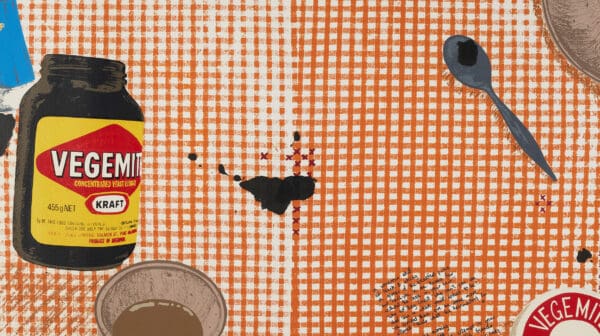
Reframing a Collection
Drawn from the Cruthers Collection of Women’s Art at the University of Western Australia (UWA), Lawrence Wilson Art Gallery’s show Place Makers, reframes the artists—who just happen to be female.
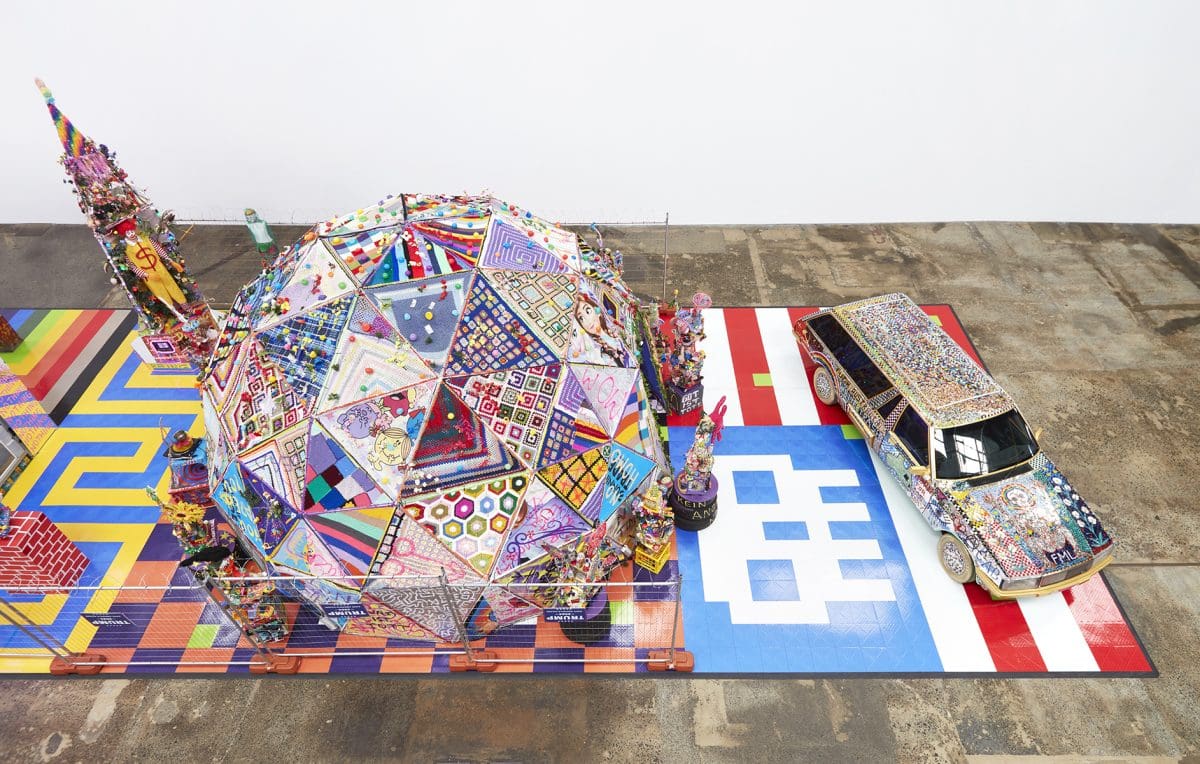
Paul Yore, WORD MADE FLESH, 2022, Carriageworks. Photo: Zan Wimberley.

Paul Yore, WORD MADE FLESH, 2022, Carriageworks. Photo: Zan Wimberley.

Paul Yore, It’s all wrong but it’s alright, 2020. Courtesy of the artist and Hugo Michell, Adelaide.
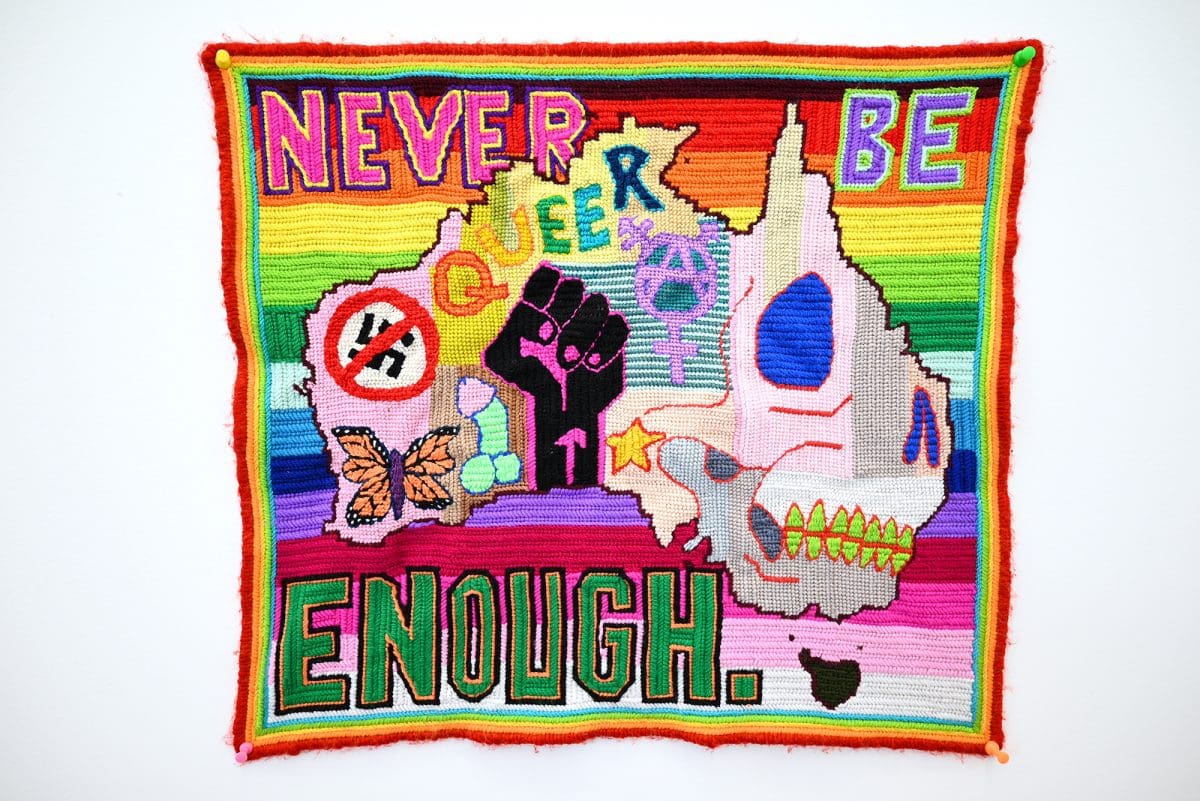
Paul Yore, Never be enough, 2021. Courtesy of the artist and STATION, Melbourne and Sydney.
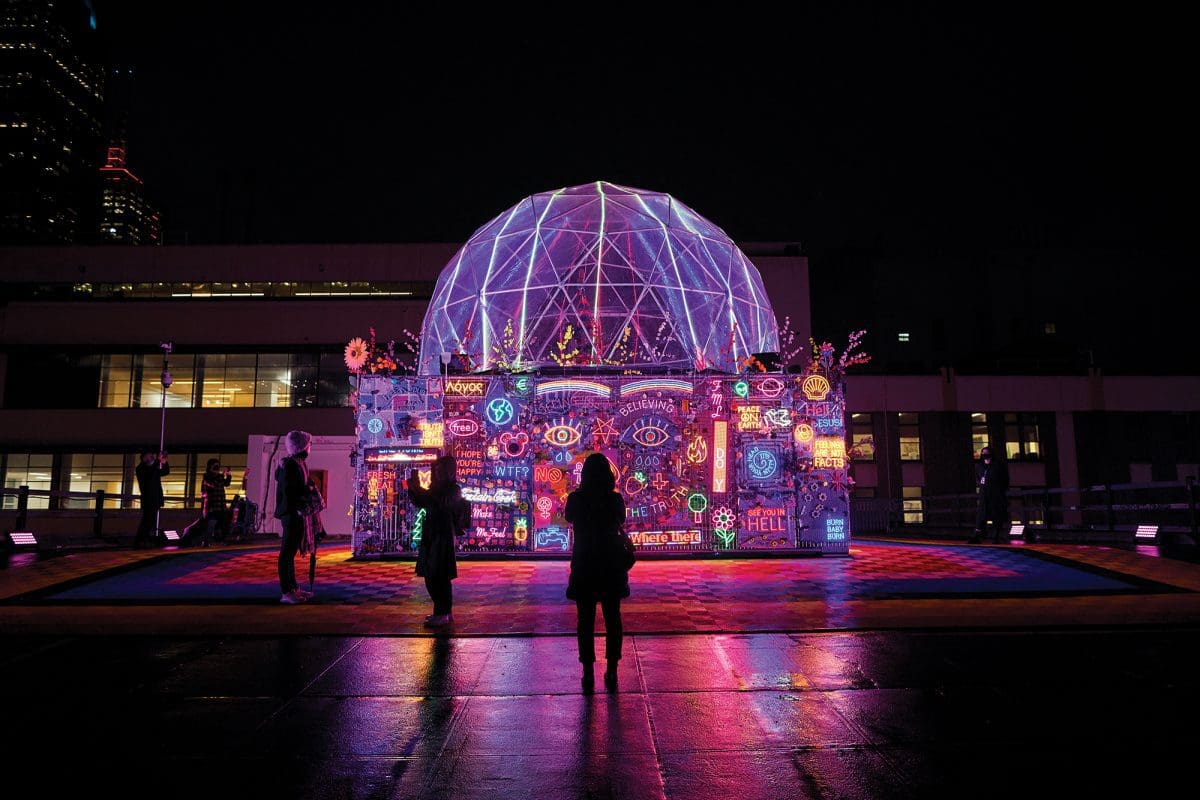
Paul Yore, SEEING IS BELIEVING BUT FEELING IS THE TRUTH, 2022. Installation view, Rising Melbourne Golden Square.
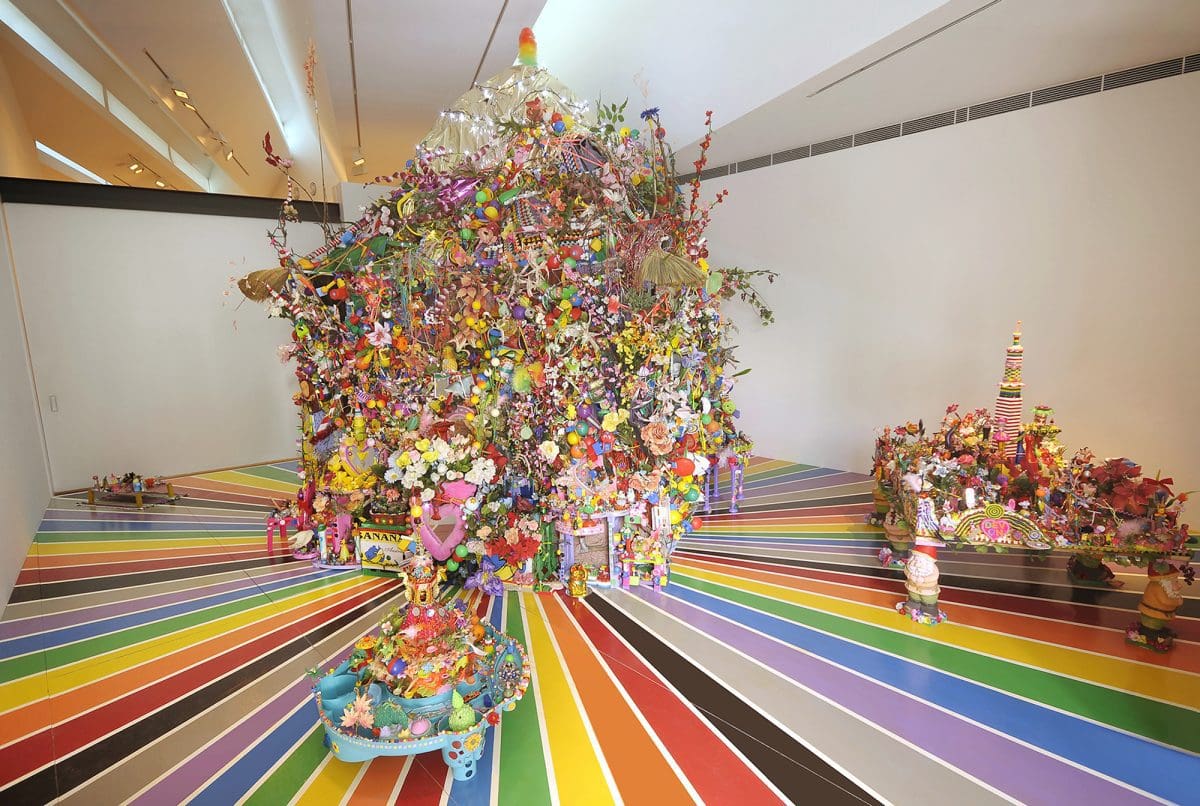
Paul Yore, THE BIG RAINBOW FUNHOUSE OF COSMIC BRUTALITY, 2009. Installation view, Heide Museum of Modern Art.
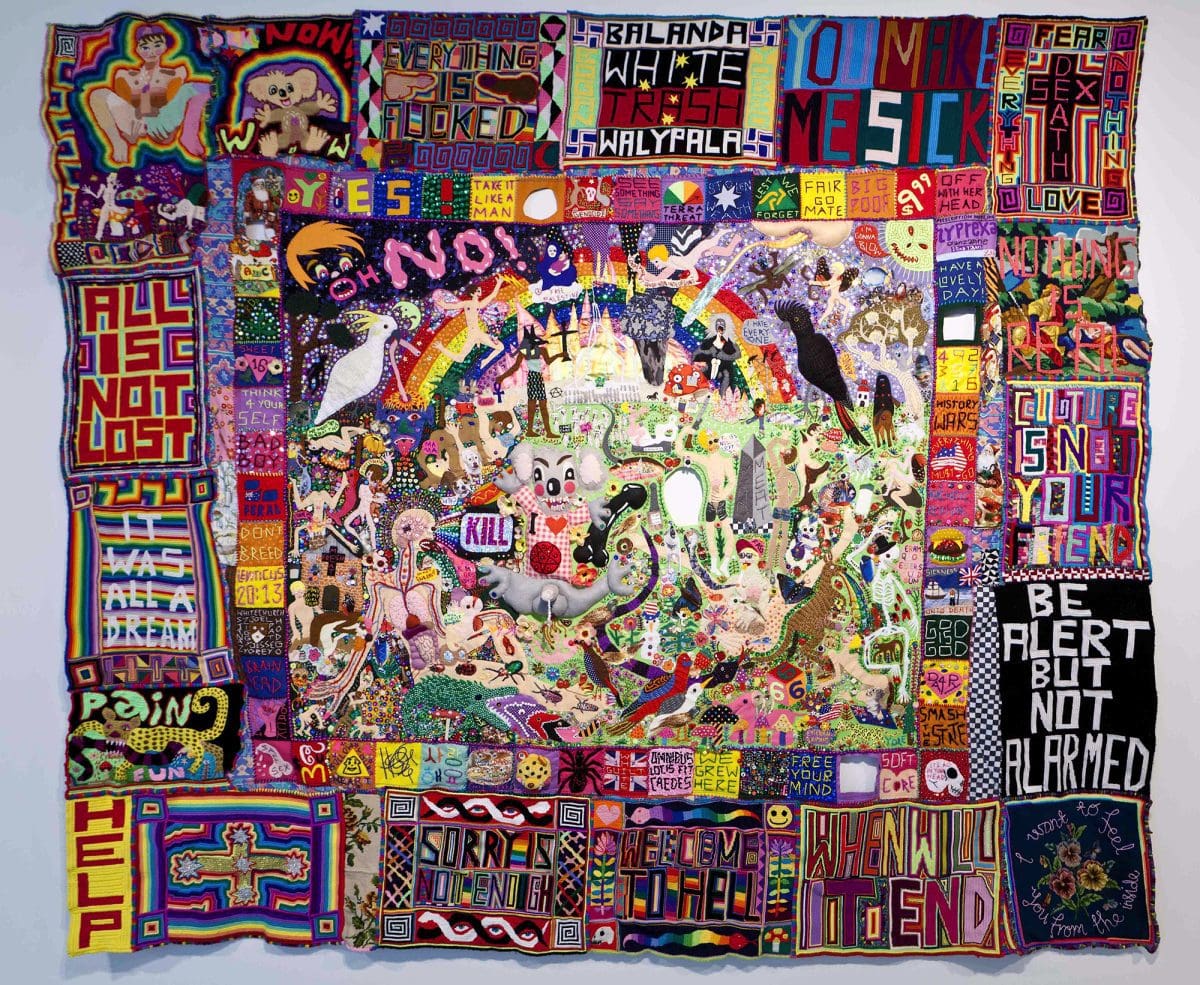
Paul Yore, Welcome to hell, 2014. Courtesy of the artist and STATION, Melbourne and Sydney.
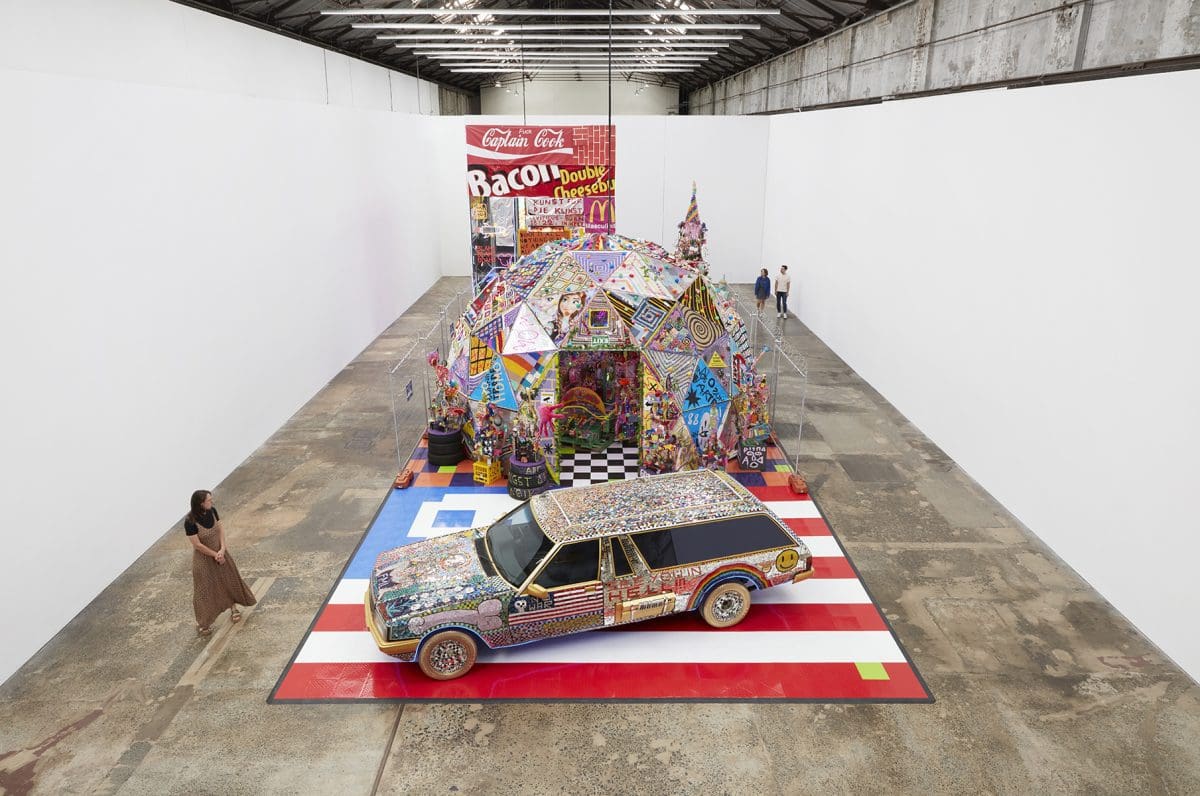
Paul Yore, WORD MADE FLESH, 2022, Carriageworks. Photo: Zan Wimberley.
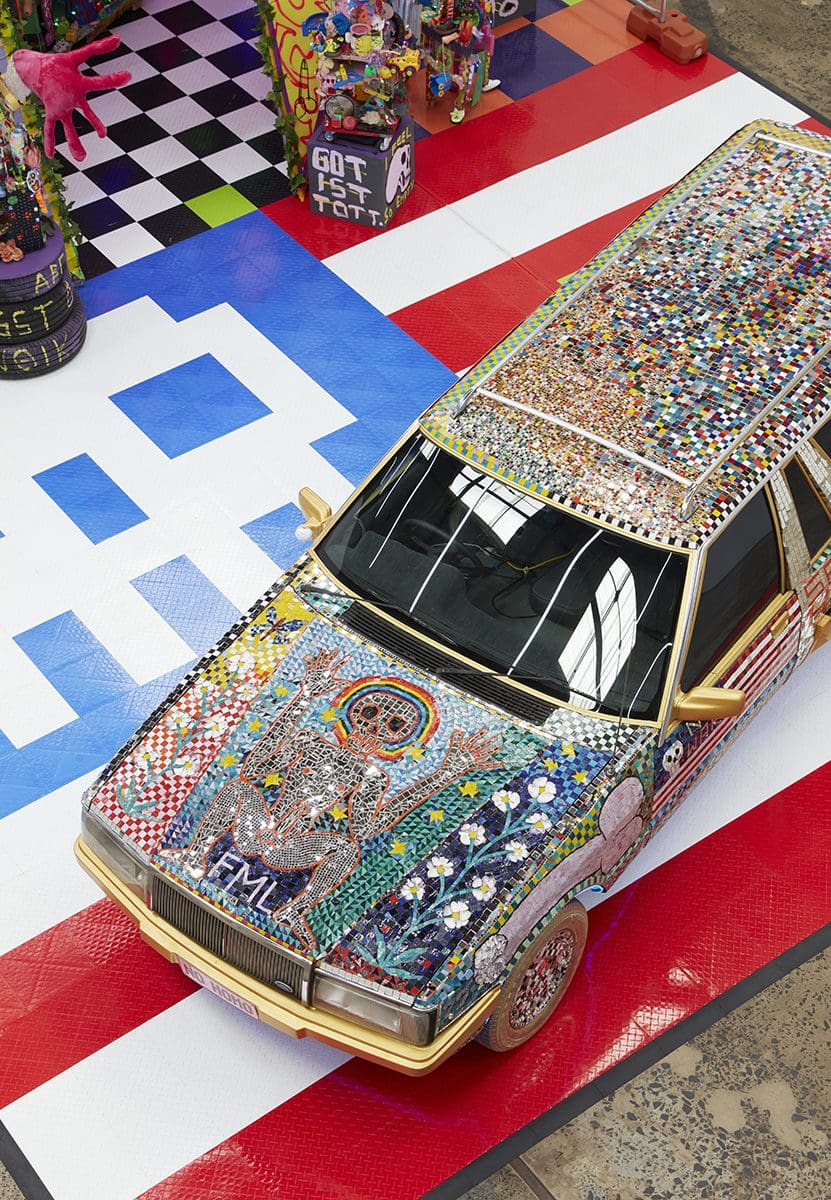
Paul Yore, WORD MADE FLESH, 2022, Carriageworks. Photo: Zan Wimberley.
Paul Yore’s installations and textiles are like nothing else. In blazes of colours, images and fonts, Yore blends images of pop and internet culture with political phrases and points, alongside his interests in decorative Flemish and French tapestries, trashy pop culture, psychedelia, cartoons and an aesthetic of total excess. For all the outward play and fun, when looked at slowly the work belies something much deeper. Ahead of his 2022 solo show at the Australian Centre for Contemporary Art (ACCA), we asked Yore 20 quick questions.
Your first art crush?
Hieronymus Bosch.
A favourite image or phrase you’ve placed in one of your tapestries?
“SEE YOU IN HELL!” is always a crowd-pleaser.
The most interesting thing someone has said to you about your work?
Someone once told me my work ‘changed their life’. I hope they meant for the better . . .
Best time of day to create?
I still think the middle of the night is the most creative time, the witching hour . . . but I’m getting too old for that!
Beauty or politics?
Politics is, in some ways, the pursuit of beauty. The dismantling of destructive systems of exploitation and the creation of classless and caring modes of social engagement is, in some ways, nothing more than the re-beautification of the world.
Order or chaos?
I think order may be merely an illusionistic imposition. Perhaps everything is chaos, and we should embrace that.
You’ve talked about being age 13 and realising you were gay, coupled with the 9/11 attacks and understanding the world is a “hostile and troubled place”. Do you feel this way now, too?
Possibly every culture at every time in history has felt some immense, impending cataclysm was upon them. It’s a feeling that seems to hover close to the surface in the art and culture of ancient civilisations. Why do we feel our current global civilisation is immune from the same fate? For example, the Trump regime in America had all the same markers of cultural decline evident during the collapse of Roman imperialism: toxic masculinity, despotism, decadence, social division, plague, the subjugation of minorities, corruption, and economic mismanagement. I do think we are ultimately doomed as a species, but nature will manage just fine without us.
Do you think your archaeology and anthropology background comes out in the artwork?
From a very young age I was interested in ancient cultures, hieroglyphics, symbols—in signification itself. I still would say considerations of language and meaning-making is inherent to why and how I make art. The methodologies of anthropology and archaeology have certainly influenced my interest in collecting and examining waste products, but as fields of scientific inquiry, I do also think these disciplines are inherently problematic owing to their many biases and assumptions.
For all the brightness of your work, to me it’s also deeply troubling and sad—it’s like the feeling of great pop songs. Do you see it this way?
Great pop songs channel personal experience into universal symbols, but there is always a tragicomic element in this translation. My work tries to capture an emotional intensity, oscillating between delight and desolation, in many ways a reflection of how one experiences the world, which is complicated and bewildering. As a queer person, I think this space in between ecstasy and agony is particularly generative.
What do you like about the theatricality of the Rococo style?
The fantastical superfluity and rich ornamentation of Rococo style has long fascinated me. The style is giddy and sensorial, an all-encompassing indulgence in texture, materiality, and illusionistic space. In many ways it is campness taken to its logical extreme.
But I also have a paradoxical relationship with this period of art, as it obviously represents the worst excesses of monarchical indifference to human misery, with all its gold and silk. On some level, I think I am attracted to it because it seems to contain the seeds of its own destruction, an art movement ultimately swept away by revolution.
Favourite moment in pop culture history?
I really love the outlandish, androgenous, genderqueer styles and attitudes of the subcultures of the 80s in New York and London, particularly the New Romantic movement and the Club Kids scene.
If you could collaborate with any artist, dead or alive, who would it be?
I would like to work with Madonna. I would love to design a set or costume for one of her music videos.
Best colour to create with?
Pink—obviously . . .
Classic ‘Paul Yore’ drink order at the bar?
I have been sober for over 10 years now—so I will usually go for a cranberry juice.

Are you a good cook? Any signature dishes?
My cooking is a bit like my work—I like to chuck everything into the pot and pray. Luckily, my partner is an excellent cook. I am, however, a keen veggie gardener, and so I provide the produce.
Where do you find the objects that go into your art?
The primary source of my work is society’s trash, which includes my own. I have used my own clothing and rubbish in my work. Even as I child, I was an avid collector, and I would find things on the side of the road and loved hard rubbish collection time. Beyond that, people give me old things, and I scour op-shops and junk yards. I also like collecting things off the beach, be it bottle tops, sea-glass, fishing lures or small fragments of coloured plastic.
Most memorable art experience?
In 2015, I was fortunate enough to visit Le Palais Idéal (The Ideal Palace), in Hauterives, a small village in south-eastern France. Le Palais Idéal is an astonishing work of visionary, vernacular architectural art by a postman-turned-artist named Ferdinand Cheval. Built from concrete and stones, it is widely celebrated as one of the most famous examples of so-called ‘outsider art’, and it is completely fantastical, the products of an obsessive virtuoso who worked on it for over 30 years.
You’ve experienced the terrible effects of censorship on your work firsthand. What would you say about the censoring of art?
There is a long and ongoing history of censoring art, literature and film in Australia, a kind of state-sanctioned moralising that can only be understood in relation to the prevailing system of colonialism. Deciding that citizens should not intellectually engage with a particular text or work of art is a very grave matter, and I believe must be limited to exceptional circumstances, when there is clear, demonstrable harm.
I love the title of your installation “IT’S ALL WRONG, BUT IT’S ALRIGHT”. But is it all wrong? And is it alright?
I borrowed the title from the inimitable Dolly Parton. One of the things I most like about Dolly is her irrepressible optimism. I have often said I am philosophically a pessimist, and I do indeed think there are certain limitations in the human animal that exclude us from the realms of true rationality, justice, good, etc. Having said all that, I don’t think I could be an artist if I didn’t believe there was some higher aspiration for people than the miserable drudgery that seems to characterise everyday life within techno-industrial capitalist societies.
What will we see at your ACCA show? And what does the title WORD MADE FLESH refer to?
My ACCA show is structured as an early-career survey, bringing together work from a roughly 15-year period of production and featuring over 100 textile pieces including appliquéd quilts, needlepoint embroidery and soft sculpture. These works will be shown alongside a major new immersive installation work, commissioned especially for the exhibition, occupying the main gallery space. The installation will take the form of a labyrinthine complex of grottos, shrines and makeshift structures comprising a vast array of found and waste materials, mixed media sculpture, collage and assemblage, painting, video, sound, mechanical sculptures, light, water fountains, plants, and many other disparate elements.
The title of the show WORD MADE FLESH, which is also the title of the new installation, is taken from the Gospel of John in the Bible. Growing up queer in a staunchly Catholic household, the images, symbols and traditions of Christianity have influenced my work greatly. I have reinterpreted this text queerly, in an open-ended way, to evoke the central role language plays in the determination of social becoming.
WORD MADE FLESH is currently on display at Carriageworks, Sydney, until 26 February.
WORD MADE FLESH
Paul Yore
Carriageworks (Sydney)
5 January – 26 February
This article was originally published in the September/October 2022 print edition of Art Guide Australia.